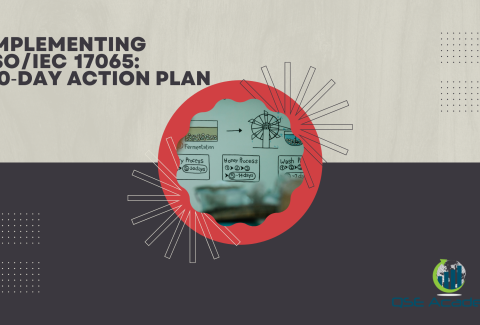ISO/IEC 17065 Audit‑Duration Man‑Day Calculator
Understanding Man-Day Requirements Under ISO/IEC 17065: Key Principles & Definitions
Here’s what I’ve seen repeatedly when certification bodies start preparing for accreditation: the confusion always begins with man-days. Most teams think it’s simply “one assessor working for one day.” But for ISO/IEC 17065, a man-day is a structured block of work that includes document review, evaluations, interviews, reporting, impartiality checks, and coordination. It’s not just hours—it’s depth and scope.
Different accreditation bodies interpret man-day allocation slightly differently. Some follow IAF guidance tightly. Others apply internal risk-based adjustments. That’s why two different quotations can show very different man-day numbers for the exact same scope.
A practical tip: When you receive a man-day estimate, ask the accreditation body to justify each component. If they can’t explain it clearly, they’re guessing.
A mistake I see often is assuming man-days are standardized across all accreditation bodies. They’re not. Your documentation quality, system maturity, and scope complexity all influence the final calculation. When documentation is clean and organized, assessors move faster—even if the official man-day allocation stays the same.
Core Variables Affecting ISO/IEC 17065 Man-Day Calculations
Several factors contribute to determining the right number of man-days. Understanding these helps you predict timelines and costs before you even contact an accreditation body.
Product-Scope Complexity
High-risk or highly regulated products need deeper assessment. That means more man-days.
Number of Certification Schemes
More schemes mean additional procedures, records, and evaluation paths. Each adds time.
Organizational Size and Structure
If you operate multiple departments or have a complex structure, assessors need more time to verify controls.
Subcontractors
Subcontracted testing or evaluations must be assessed. This alone can add significant review hours.
Witness Requirements
Some schemes require multiple witness events. Each one has its own man-day cost.
A useful tip: Keep your scope description precise. Many organizations inflate their scope unintentionally, which leads to avoidable risk classification and increased man-days.
A common pitfall I see is overlooking subcontractor impact. When subcontractor documentation is weak, assessors spend extra time sorting through it. That time is billed.
 Witness Audit Man-Days: How to Calculate and Optimize Them
Witness Audit Man-Days: How to Calculate and Optimize Them
Witness audits are often where man-days suddenly escalate. A witness audit involves observing an evaluation end to end. This includes reviewing testing methods, checking staff competence, and ensuring scheme rules are followed.
If your certification body covers several product categories or variations, you may need more than one witness event. That’s normal and part of the process.
A practical tip: Schedule witness audits during stable, routine evaluation activities. Assessors prefer observing well-defined, consistent processes.
A real example from experience: A certification body I supported aligned three product evaluations in the same week. The assessor covered all three in one visit, instead of returning multiple times. They saved two full man-days and significant travel costs.
Multi-Site and Remote Assessment Adjustments
Multi-site operations add complexity to man-day calculations. Assessors need to confirm consistency across locations. They base their sampling on risk, critical activities, volume of certificates, and staff competence.
Remote assessments help reduce onsite time, but they don’t eliminate man-days entirely. They simply shift some work to online review.
A practical tip: Centralize your documentation. When records are scattered across teams, remote assessments take longer and cost more. Centralization accelerates review time and reduces inefficiencies.
A misconception people often have is expecting remote audits to reduce man-days by half. They don’t. Accreditation bodies still need to observe critical activities onsite.
Step-by-Step Calculator Logic: Building Your Man-Day Estimate
A useful calculator doesn’t guess. It follows a structured logic. Here’s a clear approach you can apply internally.
Step 1 — Gather Inputs
List staff count, schemes, product categories, subcontractors, sites, and witness requirements.
Step 2 — Determine Risk Level
High risk requires more man-days. Low risk opens the door for reductions.
Step 3 — Apply Scheme Multipliers
Each scheme adds time based on complexity and required documentation.
Step 4 — Add Witness Events
Each witness event typically requires one to three man-days.
Step 5 — Assess Documentation Quality
Clean, accessible documentation reduces review time significantly.
Step 6 — Define Minimum and Maximum Ranges
Avoid pinning yourself to one number. Establish a range, such as eight to twelve man-days.
A practical tip: If you’ve had previous surveillance assessments, use historical data to validate your estimate.
A common mistake is using surveillance-man-day logic for initial accreditation. Surveillance is lighter. Initial accreditation is far more comprehensive.
Interpreting the Output: How to Use Your Calculated Man-Days
Once you calculate your man-day estimate, you need to use it strategically.
Convert Man-Days Into Scheduling Blocks
A man-day includes document review, interviews, observations, and reporting. Break each activity down.
Align Assessor Availability
Specialized scopes require senior assessors. Their availability can delay your timeline. Plan early.
Convert Man-Days to Estimated Cost
Multiply your man-days by the accreditation body’s daily rate. Add travel and logistics. That gives you a working budget.
Use the Estimate to Strengthen Internal Preparation
Finalize documentation, internal audits, training records, and scheme procedures early. It reduces stress and prevents last-minute delays.
A real insight from experience: rushed planning increases travel and logistics costs dramatically. Preparation saves money.
Melissa Lavaro is a seasoned ISO consultant and an enthusiastic advocate for quality management standards. With a rich experience in conducting audits and providing consultancy services, Melissa specializes in helping organizations implement and adapt to ISO standards. Her passion for quality management is evident in her hands-on approach and deep understanding of the regulatory frameworks. Melissa’s expertise and energetic commitment make her a sought-after consultant, dedicated to elevating organizational compliance and performance through practical, insightful guidance.









